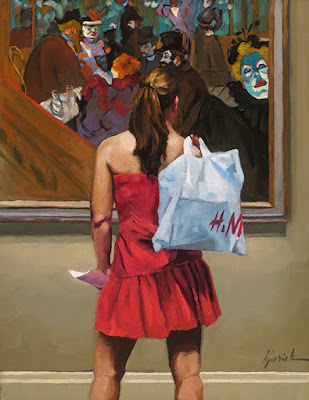6 x 8"
oil on panel
sold
sold
On the second floor of the American Art Wing in the Art Institute of Chicago, the galleries are surrounded by hallways flooded with natural light and on the walls hangs six brightly-colored, geometric shapes called the Chicago Panels by Ellsworth Kelly.
Ellsworth Kelly's success came in the 1950's. He could fit into the categories of Minimalism, Color Field and Pop Art with his focus on shapes, forms and colors - intending for viewers to 1 - enjoy public art and 2 - to think of art in terms of the spaces where it occupies. He took real-life observations and mimicked those subjects in an abstract way.
As a kid, Kelly was a loner, had a slight stutter, spent most of his time as an avid bird watcher and was heavily influenced by John James Audubon. He wanted to study art, his father wanted him to sway more to technical training - he entered military service in the early 40's and used his G.I. Bill to study at the Museum of Fine Arts, Boston where his mind opened up to Surrealism and modern art. There he went to Europe for more studies for six years, returned to New York, stumbled a bit until his concepts found the right time and the right place and took off from there. In the case of the Chicago Panels, each brightly-colored panel represents a bird - the yellow panel possibly a goldfinch - so you can easily see those years of bird watching kept with Kelly all his long life. He lived to be 92 and died in 2015.
































